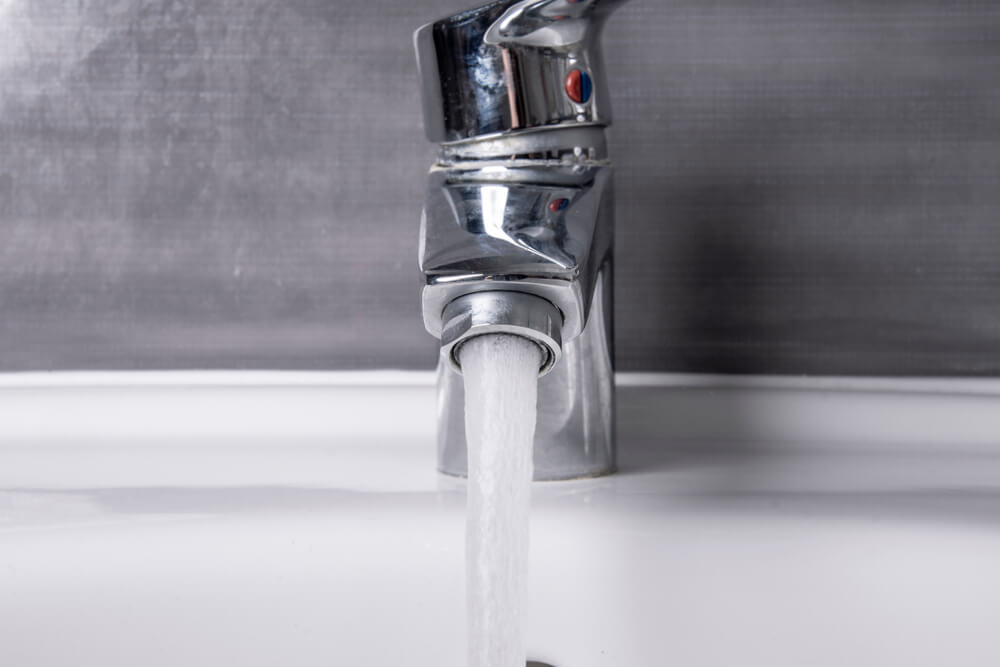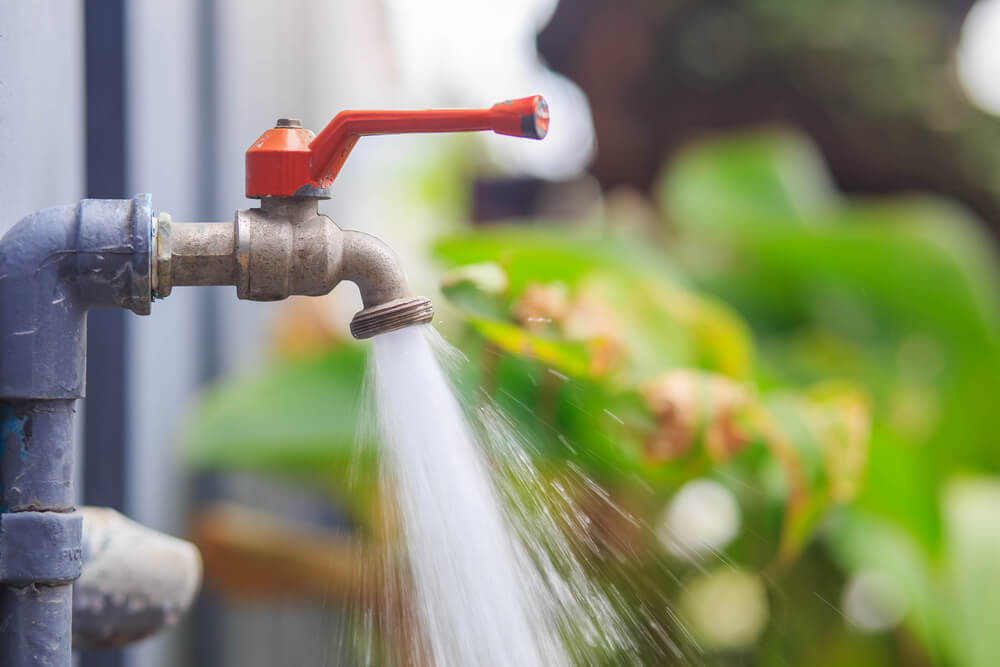Water flow rates are something that many homeowners don’t consider, whether it’s when they’re moving in or making changes to their water system. It shouldn’t be this way — your flow rate can make or break how well your home works for your family. The more people you have, the higher it should be for you to live comfortably together.
What is the average household water flow rate?
In this article, we’ll answer that question and others, such as what flow rate you should aim for in your household and what you can do to boost your flow rate when it’s too low.
What Is the Average Household Water Flow Rate?
The typical residential water flow rate for small households is between 6-12 gallons per minute (GPM). This means that most households consume about 100-120 gallons of water each day. This number can vary depending on where you are in the world, the newness of your appliances and features, and how many people live in your household.
Because the EPA mandates that water-based appliances don’t exceed a certain GPM, this keeps many households below a certain threshold. However, if you live in a house with older devices and fixtures, you may see a higher average GPM than similar new homes.
Sometimes, the average GPM per household will be larger based on the size of the homes alone. For example, a house with six bathrooms will have six toilets to keep running, meaning it would use slightly more water than a home with just two bathrooms. The same goes for homes with multiple refrigerators, water softeners, or water heaters.
The number of people that live in your home is the main determining factor, though. If you’re wondering “How many gallons per minute do I need for my household?” the answer depends on several calculations.
Each person uses an average of about 80-100 gallons per day. Multiplying this number for each person in the household will give you a rough idea of how much water you use in a given day, but it won’t be exact. In an actual household, everyone may not shower every day, for example.

Water Flow Rate Calculation
You can calculate your household water flow rate in 3 ways shown below. While the options involve some math, one is simpler and can be a great way to calculate your water flow rate.
Consider each option to determine which is best for you.
How to Calculate the Flow Rate of Water Using Flow Rate Formula
You can use the following formula to calculate your water flow rate.
Q = A × v
“A” stands for the area of a point in the water flow’s path, and “v” refers to the water’s velocity at that point. It will be easier to track water through a transparent point or an orifice since you can use a colored dye to track the water.
Then, you can determine the area the water takes up as it passes through a point, whether it’s an orifice or not. The dye can help you track the velocity, and you can measure the circumference of the tube to track the area.
Once you get the area and velocity numbers, you can multiply them to get “Q” or the water flow rate.
Use an Orifice
You can calculate the water flow rate through an orifice, such as a drip emitter or a spigot. To do this, you’ll need a container to hold the water, and you should know how big the container is. You will also need a stopwatch to track the time it takes for the container to fill up.
If you use a drip emitter, you will need a smaller container because it can take longer to fill up. However, you can use a larger container if you can wait longer. You can also choose to measure the water flow in minutes or hours.
When you’re ready, set your container under the orifice and start the water and stopwatch simultaneously. Wait until the container fills completely and stop the time on your stopwatch. If your container is five gallons or some other multiple, you will need to divide it by the number of gallons or quarts.
For example, if it takes an hour to fill a five-gallon container, the water flow rate is five gallons per hour. If it takes two hours to fill the same bucket, the flow rate would be two and a half gallons per hour.
Use Water Pressure
Another mathematical option that doesn’t require seeing the water can focus on water pressure to calculate the flow rate. You can use a pressure gauge and Poiseuille’s Law. To calculate the flow, you will use an equation to track the flow.
You will need to calculate the water pressure at two points and subtract the second from the first. Then, you will multiply that by the radius to the fourth power and then by Pi.
After that, you will need to multiply the water viscosity by the length and then by eight. Finally, you can divide the first number by this second number. While this calculation is more complex than the other options, it can be useful if you can’t see the water and don’t want to pour water just to calculate the flow rate.
How Many Gallons Per Minute Do i Need for My Home?
Calculating your GPM instead of your gallons per day is a much more efficient way to determine your flow needs. Start by considering how many appliances you’ll have running at the same time on most days. Will you ever run the dishwasher at the same time as the shower? What about your clothes washer or your sink? Will multiple people be showering at the same time?
If all of your faucets and appliances were running simultaneously, how much would your GPM be? Unless you plan to add extra kitchens, bathrooms, or laundry rooms to your home in the future, your home will never need to exceed that final GPM. The average GPM usages of some common fixtures and appliances are:
- Toilet: about 2.2-5 GPM
- Bathtub: 4-8 GPM
- Shower: 2.5-5 GPM
- Dishwasher: 2-3 GPM
- Faucet: 2.5-3 GPM
- Washing machine: 4-5 GPM
Ensuring Maximum Flow Rate
You can do many things to increase the flow rate of water in your home, though not all of them may be applicable (or even affordable). For residential homes, the limiting factor on water flow is rarely the pressure as it enters your home; more often, the pipes and filters in your home are what limit your GPM.
If you have a whole-house filter that screens out impurities like iron and sediment, for example, the GPM that your house can support may be a bit lower. Fortunately, this is an easy problem to fix. All you need to do is replace the filter with one that can support a more substantial water flow.
Replacing your home’s pipes, on the other hand, can be much more involved and expensive. For example, if your house is older and connects to city water, the water line from the road to your home may be too small. You would have to dig it up and replace it to get a more reliable water flow, and this can get expensive!
Replacing the plumbing inside of your home is a bit easier, but still much more expensive than replacing a filter on a filtration unit. You may find that replacing your fixtures and appliances with more efficient versions is enough to reduce your flow rate, and this can be much less expensive. Many companies sell “low-flow” appliances and fixtures designed to help mitigate low flow rates.

Dealing With Flow Restrictions
Let’s imagine that you have one dishwasher, two showers, two toilets, a washing machine, and four faucets in your home. Assuming all of them use the minimum GPM listed above, this would equal roughly 25 gallons per minute.
However, your water pressure doesn’t need to support 25 GPM; there will be very few situations when you’ll need to run all these appliances at the same time. As long as your house can support about 12 GPM at maximum, everything should run smoothly for you.
You might be thinking, though, what if I have four or five people living in my household? They could end up using several showers, faucets, toilets, and other appliances at the same time. While this is true, our other appliances, such as water heaters and water softeners, tend to limit how much water we can use all at one time.
At some point in your life, you’ve probably been ready to hop in the shower, but then you noticed that the dishwasher was running, clothes were in the washer, or a family member was in a different shower already, so you decided to wait. Of course, if your home had a large or tankless water heater, you may not have had this issue!
This is just one of many common limitations that can change how people use their water. Lack of hot water is one of them. Preferring bottled water is another example; if you don’t like the taste of the water from your faucet, it can reduce your usage in the long run.
More from the Blog:







We just had the well drilled for our new house. They got 2.5 gpm at 476 feet, with the water level at 200 feet. they went to 600 feet, and it increased to 3 gpm. we’re two older adults, with two baths with low flow toilets and shower heads, clothes washer, dish washer, two outside spigots to feed. Are we going to have enough water? The other properties aroynd us are at 475 feet, with about 2.5 gpm.
Hi Jack, I’m not an expert when it comes to wells. But, I do know from research and experience that you typically want around 5-7 gpm to provide enough water for a typical residence (8 or more gpm is great). I believe a flow rate of around 3 gpm is usable, but not great. So, if you’re lower than that, I would think that you may need to supplement and have other things to help your situation. Best of luck to you.
So when you add households to a well, how do you calculate the GPM needed? Example: If the average household of 4 uses 10 GPM and I add two more households that use 10 GPM does that mean my well needs to provide 30 GPM?
Hi Roy, yes, your logic and math here are correct.